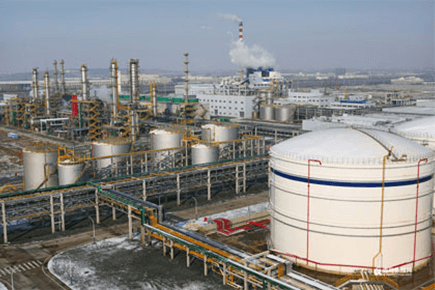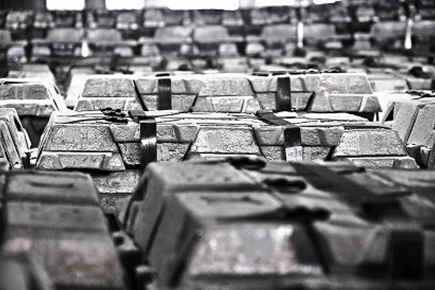
Common Causes and Treatment Measures of Ion Exchange Resin Performance Degradation
Common causes and treatment measures of ion exchange resin performance degradation
The performance of ion exchange resin is affected by many factors. If abnormal performance degradation of ion exchange resin occurs in daily use, we generally carry out the cause analysis and take corresponding measures according to the following sequence.

1. Check the height of resin bed to determine whether there is resin loss.
The performance of a certain amount of resin on specific feed liquid is relatively stable. When the amount of resin decreases and the feed liquid stays the same, the performance of resin will naturally degrade. Therefore, when performance degradation of ion exchange resin occurs, we need to judge whether there is resin loss by observing the height of resin bed. If so, it indicates that the strainer of the resin column is damaged. We need to check the resin column and replace the damaged part. After adding the corresponding loss resin, observe whether the performance return to normal.

2. Check whether there exists bias flow of the feed liquid.
If bias flow occurs when the feed liquid flows through the resin bed, the feed liquid will decrease and some of the resins in the bed will not work at all. In this case, the performance of the system on the feed liquids will go down and may fluctuate. On the one hand, the bias flow can be caused by uneven distribution of feed liquid and we should check the feed liquid supply system. On the other hand, air in the resin bed or the resin column will lead to bias flow when the feed liquid enters the column. To solve this problem, we need to exhaust the air in the bed by reverse feeding or backwashing and make the resin settle naturally. Then, feed the liquid and observe whether the performance return to normal.
3. Check whether the feed liquid changes remarkably.
The adsorption capacity of resin is also affected by the composition of feed liquid, including concentration of target ion, interference ion, ion species and pH, etc. There is usually a standard on the composition of feed liquid. Therefore, the periodic detection and evaluation of the liquid infusion environment and composition is also an effective approach to maintain a stable system.
4. Check whether the resin is operated strictly in accordance with the procedures.
The resin needs to be operated according to the procedures demonstrated and confirmed in earlier stage, including adsorption flow rate, regenerant concentration, regeneration volume, regeneration flow rate and other operating parameters. The rate of adsorption flow directly affects the effect and precision of resin treatment; regenerant concentration, regeneration volume and regeneration flow rate have direct influence on the effect and efficiency of resin regeneration.
In addition, though the resin is operated according to the procedures, problems such as incomplete regeneration and impurity interference still exist in daily use. Therefore, after a period of using, the resin will undergo a deep regeneration and activation process to improve its performance. To deep regenerate and activate ion-exchange resin, the cation exchange resin is treated with sodium hydroxide solution (capacity 2-3BV) and the anion exchange resin is treated with acid such as hydrochloric acid and sulfuric acid (capacity 2-3BV), or alkaline brine (10% NaCl+2% NaOH). Then we can carry out regeneration and cleaning according to the conventional process with flow rate, dosage and other parameters unchanged.
5. Check whether the resin is contaminated or not.
Resin fouling caused by suspended matter in feed liquid:
Suspended matter in the feed liquid will block up the pore of resins and the resin bed, and cause the increase of flow resistance to the feed liquid as well as the increase of pressure drop of the system. The fouling will seriously affect the mass transfer effect of ions between the inside and outside environment of the resin and thus result in the degradation of the resin treatment capacity and treatment effect.
Corresponding Measure: To remove suspended matter accumulated in the resin bed, it is recommended to increase backwashing frequency and time or scrubbing with compressed air; in order to prevent fouling of suspended matter, the filtering of raw feed liquid should be strengthened
Grease contamination:
The grease contaminates the resin mainly by attaching to the resin frame or covering its surface, which results in the fouling of the resin pore and the degradation of the resin treatment capacity.
Corresponding Measure: The resin bed and resin column can be cleaned with 8%-9% NaOH solution at 38-40 ℃ because the grease can be emulsified by NaOH. The resin bed can also be cleaned by surfactant solutions with the concentration not exceeding 0.1% at 38-40 ℃. But must be noted that, the adopted surfactant must not contaminate the resin. And after cleaning, the resin bed needs to be thoroughly backwashed and then cleaned forward the resin column until the foam completely dissipates.
Iron contamination:
As an ion with high activity, Fe3+ has a great bonding strength with functional groups on the resin skeleton. And once Fe3+ or its complex anion is bound to ion exchange resins, it is difficult to elute them effectively by conventional resin regeneration methods. Therefore, effective functional groups on the resin skeleton will reduce and the resin treatment capacity will go down.
Corresponding Measure: The common approach is to regenerate the resin bed with 10-18% hydrochloric acid solution. Corrosion resistance of exchangers and lines must be checked before regeneration process, and sometimes hydrochloric acid solution with inhibitors is needed. Prevention is the most important in iron contamination. It is suggested to strictly monitor the iron content in the feed liquid to avoid iron pollution.

The above is the general analysis and corresponding measures for the performance degradation of ion exchange resin. However, specific analysis is still needed because the reasons for the performance degradation of ion exchange resin will vary according to the specific conditions and brands of resin products. As a professional and reliable resin separation and purification company, Sunresin embraces professional technical engineers who will provide targeted analysis, approach, and other technical services according to your actual condition. What you need is what Sunresin pursue.















